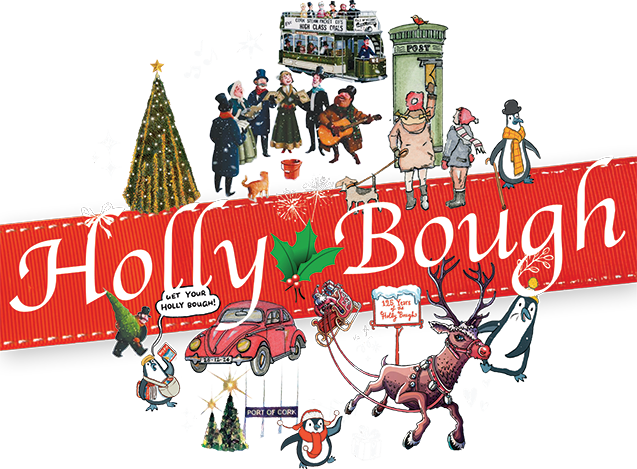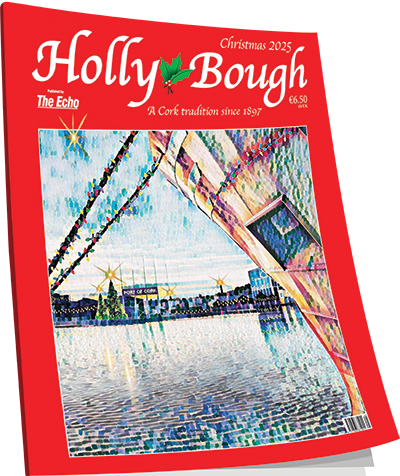John Creedon maps out Irish place-names in new show
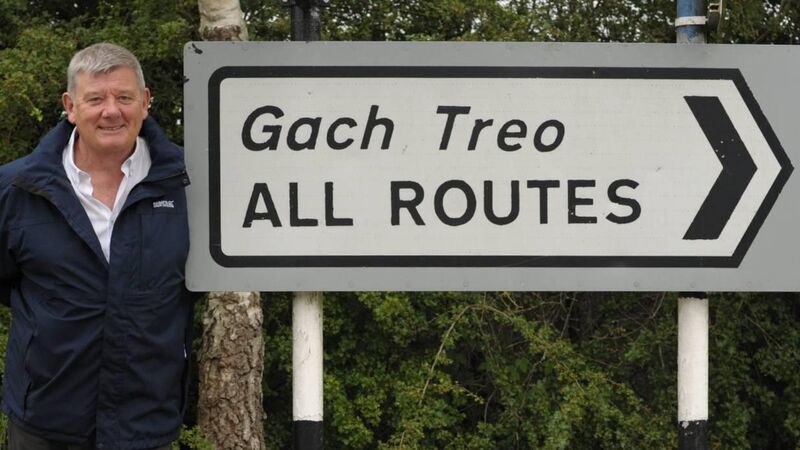
John Creedon: His life-long curiosity about place-names led to a two-year Regional Studies course at UCC. Picture: Rory Cobbe
THE first episode of ‘Creedon’s Atlas of Ireland’ – which airs at 6.30pm on RTÉ 1 on Sunday - features a scene with a young John Creedon – or rather young actor Tomás O’Connor McGovern - lying on the carpet in the Creedon family home on what John’s brother Cónal calls “the spaghetti bowl of downtown streets that I call home” - leafing through an atlas and circling place-names.
Beside Young John on the floor is a nature picture book, and a radio plays in the background, of course. The image will ring true for those who listen to Creedon’s week-night music show on RTÉ Radio 1, where the presenter regularly wanders off down what he calls Botharín na Smaointa – the byroads of daydreams.
“I’ve always had a grá for place names, since I was a kid really,” the Cork broadcaster says.
“My mother and father were Irish speakers, my father especially. He was from Inchigeelagh, which he called a “Breac Gaeltacht”, a speckled Gaeltacht, where some houses were Irish-speaking and some English-speaking. My dad had Classical Latin and Greek. And makey-up words!
“As a young fella, it was from him I got that interest. I have a very clear snapshot in my head of standing in the well of the car in front of the front passenger seat, with my elbows up on the dashboard, asking him about place-names.
“‘Dad, what does Glengarriffe mean?’ ‘It’s from Gleann meaning Glen and Garbh meaning rough. So Rough Glen and if you look around you, you’ll see why!’
“Or Tír na Spideoga, which translates as the Land of the Robins. Or Keimaneigh, the Leap (or the path) of the Deer.”
A look back at John Creedon’s annual summer TV programmes – from ‘Creedon’s Retro Road Trip’ (2011) to ‘Creedon’s Road Less Travelled’ (2018) - shows they have always reflected his interests and obsessions. That said, few of Creedon’s shows seem so perfectly tailor-made for him as this one.
“In this game,” he admits, “you’re always hoping for the magic question, and this year RTÉ finally asked it: ‘What do you want to do?’”
(Two years ago, publicising ‘Creedon’s Shannon’, he told The Echo: “I’m just so fortunate that I’m out talking about place-names, wading up to my neck in water, catching frogs and acting the eejit.”)
Creedon’s life-long curiosity about place-names led to a two-year Regional Studies diploma course in UCC, where he studied Irish Folklore and place-names. Now, he explores his passion in his new show.
For Creedon, the study of place-names has changed the way he sees Ireland.
“Driving around the country, I find my view of the landscape has become 3D, as I read the signs and stories within the place names.”
The first episode of ‘Creedon’s Atlas of Ireland’ features a visit to the Ordnance Survey Ireland map store, where cartographer Hubert Davey shows Creedon around OSI’s archive of 43,000 maps, dating back to the original, official 1825 maps. John also looks at the 1600s Down Survey maps, where the Anglicization of Irish place-names began.
For instance, in Limerick, Baile an Ghadaí, the Town of the Thieves, became Ballingaddy. In Leitrim, Droim Sean Bho, The Ridge of the Old Cow, became Drumshanbo.
In time, the British Government became unhappy with the taxation it was receiving from Ireland, and decided it needed to tighten its oversight. The decision was made to undertake a more detailed survey of Ireland, on a scale of six inches to a mile, with place-names marking out the 1,900 maps it would take to cover Ireland.
The survey would be carried out by the British Army, and headed by Major Thomas Colby ((1784-1852). He would require surveyors, and his advertisement was to-the-point:
“Surveyors wanted. The successful candidate will be expected to endure travel, ill lodgings and diet, as also heat and cold, being men of activity, that could also leap ditch and hedge, and could also wrestle with several rude persons with whom they might expect to be crossed and opposed.”
A young scholar named John O’Donovan was employed – Hubert Davey likens him to a “place-names archaeologist” – and with his team he set out to record forensically and translate the country’s place-names, a task which took over ten years and covered over 140,000 place-names.
It is in O’Donovan’s footsteps that Creedon sets out, following the path of a place-names giant.
From viewing the first of three episodes, this is a fascinating programme, cleverly written, and beautifully shot; it’s also great fun, and the presenter’s passion for his subject beams from the screen. ‘Creedon’s Atlas of Ireland’ is a fine addition to John Creedon’s library of programmes, and a credit to its production team in RTÉ Cork.
For any other radio producer and presenter, a summer TV show might seem like a side-project, something done away from the day (or evening) job. With Creedon, though, the radio work never seems like that, work. Maybe that’s his secret.
Creedon’s week-night radio programme on RTÉ Radio 1, now in its tenth year in its current slot, has become a national institution, and no two shows are the same. His love of music shines through, and he has always loved promoting Irish talent.
Monday might feature the likes of Jack O’Rourke, Julie Feeney, and Elbow, rubbing shoulders with Rory Gallagher, Miles Davis, and Greenshine, and Tuesday might see Sorcha Richardson, Bruce Springsteen, and BB King sharing the bill with Clare Sands, and Marlene Enright. Another night you might get the Beatles, or Tom Waits, or Emma Langford, or One Horse Pony. You never can predict what will come around next in the Creedon Jukebox.
There’s a chattiness to the show, too, one you rarely get elsewhere. Creedon describes himself as a shopkeeper’s son, and says that shooting the breeze with customers comes as second nature to him. His engagement with listeners illustrates that, sharing jokes and comments between songs.
Last week’s Joint National Listenership Report (JNLR) showed a year-on-year increase of 7,000 listeners, and suggest Creedon is onto something. Those figures don’t reflect the show’s international audience, which texts and tweets in its nightly droves from all over the world. Creedon says he tries not to stress about numbers but “they’re going in the right direction”.
He adds that he’s not complacent either: “There’s still plenty of room down at the back, and up on the balcony. Come on in! Everyone is welcome!”
There’s a lovely moment in the first episode of ‘Creedon’s Atlas of Ireland’, where Creedon visits the National Archives in Dublin, to view John O’Donovan’s 3,311 original, vellum-bound 1820s pocket-books covering his work recording Ireland’s place-names. 391 of them cover Cork.
Creedon’s eyes light up like a child’s on Christmas morning at the sight of the pocket-book marked “Inchigeelagh, Barony of Muskerry, County Cork”.
The young John Creedon, circling names on the map in the Creedon family home on Devonshire Street, would be in heaven.
Creedon’s Atlas of Ireland begins at 6.30pm on RTÉ1 on Sunday, August 11. The John Creedon Show is on RTÉ Radio 1 at 8pm, Monday to Friday.
John Creedon’s new TV series indulges his life-long passion for Irish place-names. Donal O’Keeffe caught up with the veteran Cork broadcaster ahead of “Creedon’s Atlas of Ireland”.
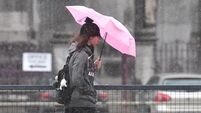

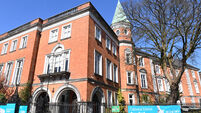




 App?
App?

